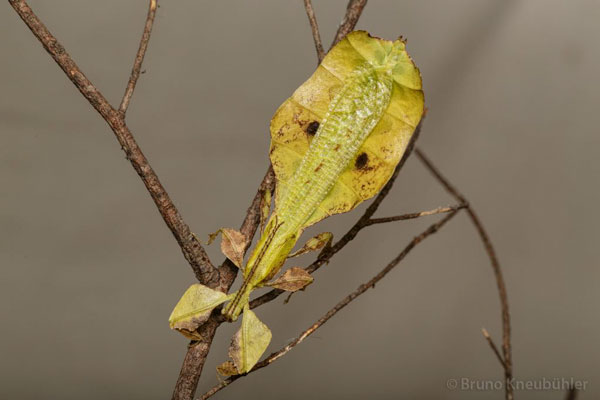
Here you find a wealth of detailed background information and tips which help to improve the conditions for your phasmid cultures. Including detailed care sheets (culture reports) for more than 250 phasmid species
Some breeders are very successful in culturing a species with their techniques and the micro-climatic conditions they offer. Yet other breeders fail, even though they offer (at least to the best of their knowledge and experience) the same micro-climatic conditions, the same food plants and a suitable cage. And this can be quite a disappointing situation
As so often in life, the devil might be in the details. Although often overlooked, there are factors which support or hamper successful breeding. The "correct" micro-climate is but one such factor. Some others are overpopulation (one of the main reasons for failures), exposure to direct sunlight (overheating), temperature (too hot during summer) or cage ventilation (can be crucial for Phyllium). And then there are factors we can just not change, like breeders in Europe have a limited choice of food plants during winter, while breeders in tropical countries face the difficulties of high temperatures.
Many species, even a good number of the species new in culture, are very easily bred under a wide range of micro-climatic conditions and they flourish on different food plants. Yet some other species can be rather difficult for the first 1 - 2 generations, while the following generations are easier and less sensible, as they adapt to the breeding conditions quickly. And then there are species where it is (for now) virtually impossible to establish a stable culture - or it is impossible to breed such species for even just one full generation. This is mainly because we can not offer a suitable (alternative) food plant or the correct climatic conditions. Cultures of such "difficult" species might die out after only a few generations while showing signs of increasing degeneration (low hatching ratio, few nymphs survive, decreasing body size). This is often the case with specialized feeders and some of the well-flying species which appear to be more sensitive regarding climatic variations. An example is the well-known Eurynecroscia nigrofasciata, where at least two breeding attempts failed to cause the nymphs would not accept any of the food plants available in Europe.
If you experience breeding problems, then check if something has changed with the micro-climatic conditions within and around the cage. Keep an open mind, and try out something new from time to time. If the problems persist, then consider changing some factors, e.g. more or less ventilated, more or less humid, lower temperature, other food plants, reduce overpopulation...
As a general rule of thumb, phasmids do not like being stressed. Thus a slightly "negligent" care is usually better than being an over-protective breeder.


- Basics of Phasmid Breeding
- Basics of Food Plants
- Basics of Cages
- The Correct Climate
- Nymphs
- Incubation
- Socialization
- Problems & Diseases
- Keeping our phasmid cultures pure